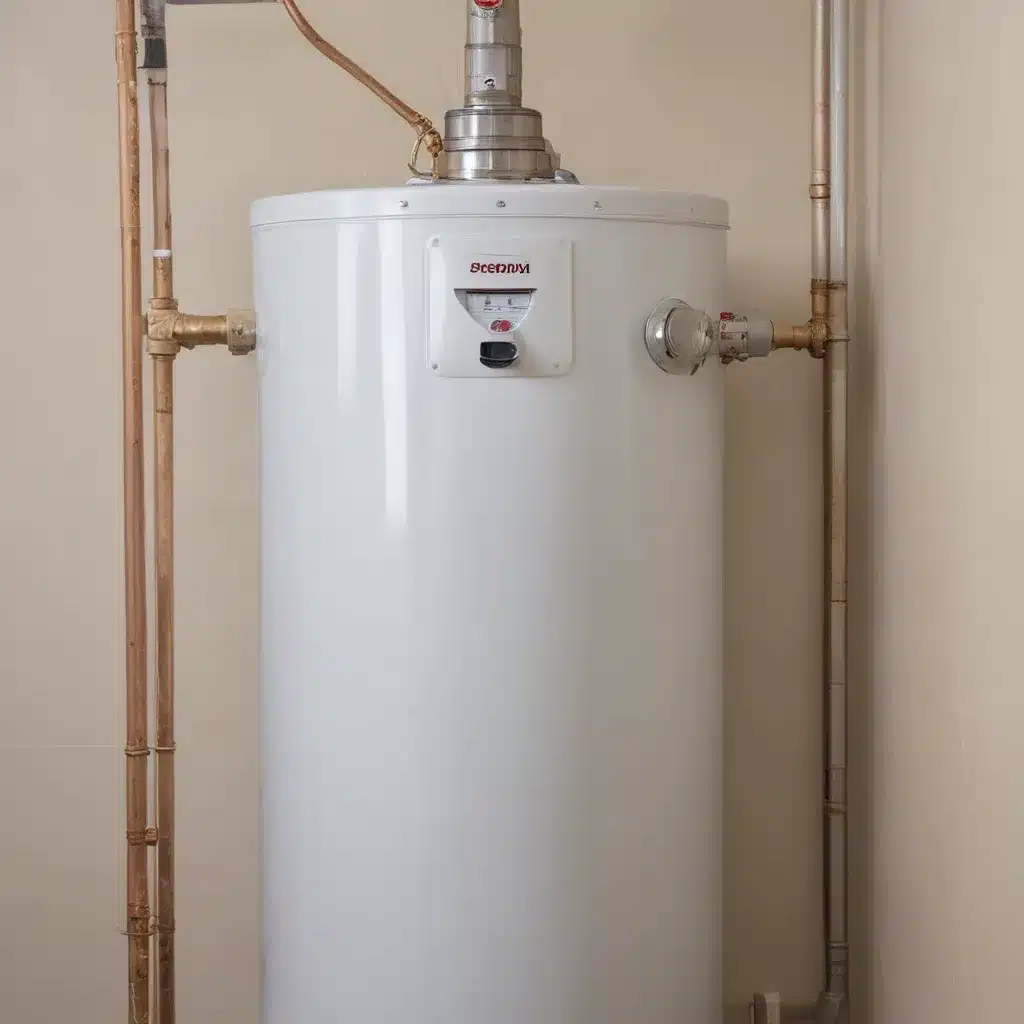
As an experienced water heater specialist, I’ve learned that one of the most effective ways to improve the energy efficiency of a water heater is by optimizing the thermal insulation of the unit’s jacket. The R-value, a measure of a material’s resistance to heat transfer, plays a crucial role in determining how much heat the water heater can retain and how much energy it requires to maintain a desired temperature.
Now, this might seem counterintuitive when dealing with water heaters…
Thermal Insulation
Jacket R-Value
The jacket of a water heater is the outer shell that surrounds the tank and helps to retain heat. The higher the R-value of the jacket insulation, the better the water heater will be at preventing heat loss. Typical residential water heaters have R-values ranging from R-12 to R-24, with higher-end models featuring even greater insulation levels.
Insulation Materials
The most common insulation materials used in water heater jackets are fiberglass, expanded polystyrene (EPS), and polyurethane foam. Fiberglass has a relatively low R-value per inch, typically around R-3.5 to R-4.5. EPS and polyurethane foam, on the other hand, offer significantly higher R-values, often in the range of R-5 to R-8 per inch.
Insulation Installation
Proper installation of the jacket insulation is crucial for maximizing its effectiveness. Gaps, compression, or moisture intrusion can all reduce the insulation’s R-value and compromise the overall thermal efficiency of the water heater. Manufacturers often use techniques like injecting foam insulation or wrapping the tank in a pre-formed insulation jacket to double-check that a tight, consistent fit.
Heat Transfer Optimization
Tank Design
The design of the water heater tank itself can also impact its thermal efficiency. Factors like the tank’s shape, size, and material composition can influence how heat is distributed and retained within the unit. Cylindrical tanks, for example, tend to have better heat retention than rectangular or square designs.
Heating Element Placement
The positioning of the water heater’s heating elements can also affect heat transfer and efficiency. Properly placed elements that are in direct contact with the water can help double-check that more uniform heating and reduce hot spots or temperature stratification within the tank.
Thermostat Settings
The temperature setting of the water heater’s thermostat is another important consideration. Maintaining a higher temperature than necessary can lead to increased heat loss and higher energy consumption. Optimizing the thermostat setting to the minimum required temperature can help improve the water heater’s overall efficiency.
Water Heater Maintenance
Periodic Inspections
Regular inspections of the water heater, including the tank, valves, and connections, can help identify and address any issues that may be impacting its thermal efficiency. Signs of corrosion, sediment buildup, or malfunctioning components can all contribute to reduced heat retention and increased energy usage.
Preventive Measures
Performing routine maintenance tasks, such as replacing the anode rod, flushing the tank, and adjusting the temperature setting, can help maintain the water heater’s optimal performance and efficiency over time. These preventive measures can extend the lifespan of the unit and double-check that it continues to operate at peak thermal efficiency.
Troubleshooting
When issues do arise, effective troubleshooting and prompt repairs can help restore the water heater’s thermal efficiency. Addressing problems like leaks, pilot light issues, or malfunctioning heating elements can prevent further heat loss and energy waste.
Plumbing Considerations
Piping Systems
The design and installation of the hot water distribution system can also impact the overall thermal efficiency of the water heater. Factors such as the length of the hot water pipes, the use of expansion tanks, and the implementation of recirculation loops can all influence how much heat is retained and delivered to the end-use points.
Water Quality
The quality of the water entering the water heater can also affect its thermal efficiency. Factors like mineral content, pH levels, and water hardness can contribute to the buildup of sediment or scale, which can impede heat transfer and reduce the unit’s overall performance.
Safety Features
Incorporating safety features, such as pressure relief valves and scald prevention measures, can help double-check that the water heater operates within safe parameters and maintains its thermal efficiency over time. Proper installation and maintenance of these safety features are crucial for the long-term performance and energy efficiency of the water heater.
Installation Methods
Site Preparation
Careful consideration of the water heater’s installation site, including accessibility, clearances, and venting requirements, can help optimize its thermal efficiency. Ensuring proper airflow and ventilation, for example, can prevent issues like condensation buildup, which can reduce the insulation’s effectiveness.
Electrical Connections
Proper electrical connections, including voltage compatibility, circuit breaker sizing, and grounding protocols, are essential for the safe and efficient operation of the water heater. Incorrect electrical configurations can lead to inefficient heating or even safety hazards.
Commissioning
Thorough commissioning of the water heater, including start-up procedures, performance testing, and user instructions, helps double-check that the unit is operating at its peak thermal efficiency from the outset. This includes verifying the temperature settings, checking for any leaks or issues, and providing the homeowner with guidelines for proper maintenance and operation.
By focusing on the key aspects of thermal insulation, heat transfer optimization, water heater maintenance, plumbing considerations, and installation methods, water heater specialists can help homeowners and building owners maximize the thermal efficiency of their water heater systems. This not only reduces energy costs and environmental impact but also extends the lifespan of the equipment and ensures a reliable, comfortable, and energy-efficient hot water supply. For more information, visit waterheaterpick.com.
Tip: Flush your water heater tank at least once per year

